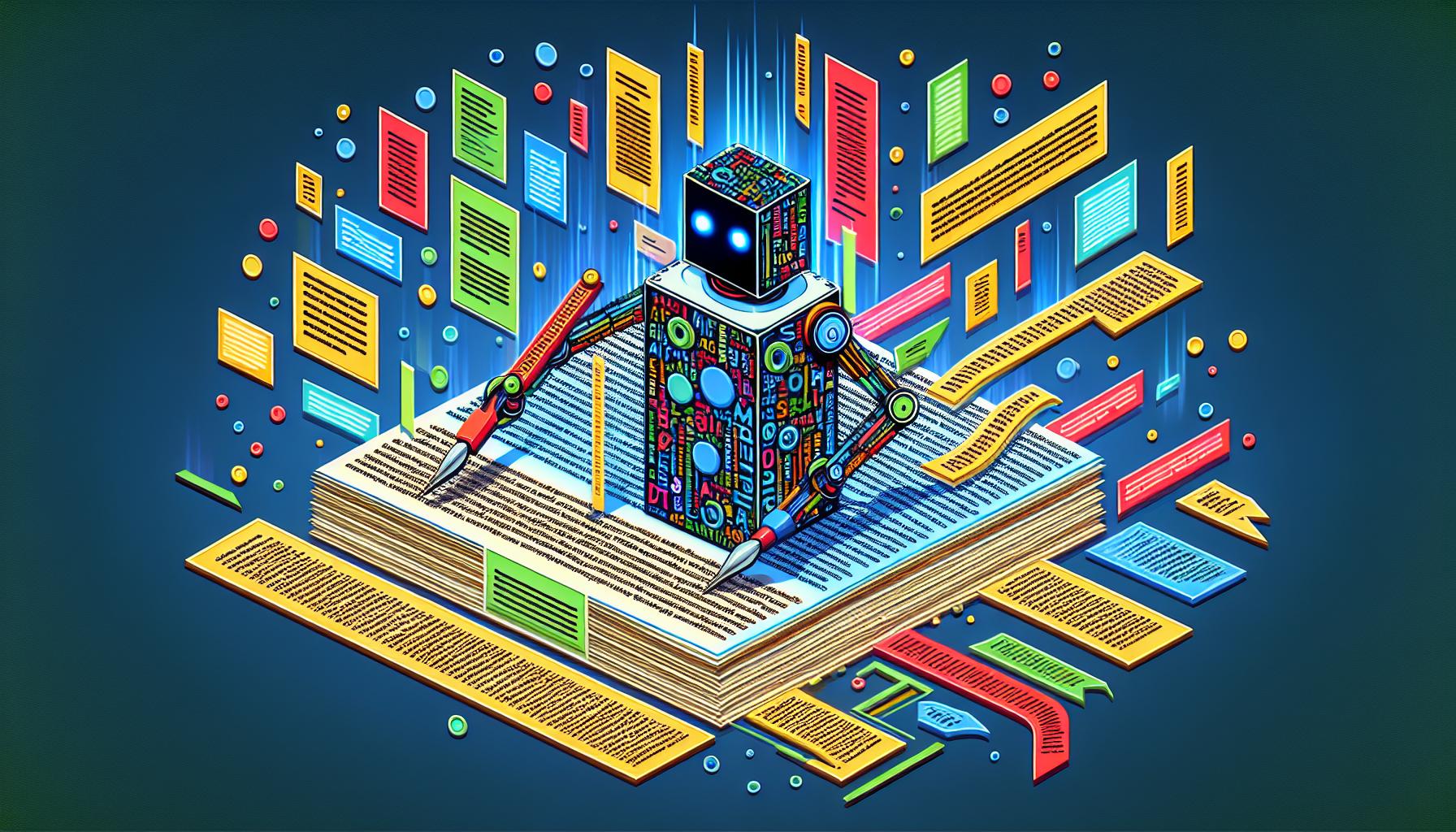AI Formatting Assistants: Revolutionizing Text Presentation

Introduction
In today's fast-paced world, the demand for well-structured and consistently formatted text is ever-increasing. Whether it's business documents, academic papers, or technical manuals, the presentation quality can significantly impact the readability and perceived professionalism. Enter AI Formatting Assistants - a technological boon that automates the structuring and presentation of large text files. This article delves into the world of AI-driven formatting tools, outlining the techniques they use to recognize structure in text data, and how they apply styles and formats to enhance readability and adherence to corporate guidelines. We will also explore specific case scenarios where these AI tools have significantly improved the production processes across various industries.
Understanding AI-Driven Formatting Tools
AI-driven formatting tools are advanced software applications that utilize Artificial Intelligence to automate the organization, structuring, and styling of text. These tools are designed to analyze and recognize patterns within text data, making it possible to apply consistent formatting rules across large documents. By leveraging natural language processing (NLP) and machine learning (ML) algorithms, these tools can identify headings, subheadings, lists, tables, and other text elements that require specific formatting.
Techniques Used by AI Formatting Assistants
The effectiveness of AI-driven formatting tools lies in their sophisticated techniques and underlying algorithms.
- Natural Language Processing (NLP): NLP enables AI tools to understand and interpret human language. By analyzing the grammatical structure and context of the text, these tools can accurately identify different text elements and apply the appropriate formatting.
- Machine Learning (ML): ML algorithms allow the AI to learn from vast amounts of data. Over time, these algorithms improve their accuracy in recognizing and formatting text elements, leading to more consistent and error-free output.
- Pattern Recognition: By recognizing common patterns in text, such as the presence of bullet points for lists or the arrangement of columns in a table, AI tools can automatically apply the correct formatting without manual intervention.
- Template Matching: AI-driven formatting tools often use pre-designed templates that adhere to corporate guidelines. By matching the text against these templates, the tools ensure that documents maintain a uniform look and feel.
- Semantic Analysis: Understanding the meaning and context of the text helps AI tools to apply formatting that enhances readability and comprehension. For instance, important terms can be highlighted, and complex sentences can be broken down into simpler, more digestible parts.
Case Scenarios of AI Formatting in Action
Let's explore how AI-driven formatting tools have transformed document production in various fields:
Business Documents
In the corporate world, the consistency and presentation of documents are paramount. Companies often have stringent guidelines for formatting, which can be time-consuming to apply manually. AI formatting assistants streamline this process by automatically applying corporate styles to documents, ensuring that everything from memos to reports adheres to the company's branding guidelines. This not only saves time but also ensures a professional and polished appearance.
Academic Papers
Academic writing requires strict adherence to formatting rules, often dictated by specific style guides such as APA, MLA, or Chicago. Manually formatting research papers, theses, and dissertations can be cumbersome and prone to errors. AI-driven formatting tools can automate this process, applying the required styles to headings, citations, references, and more. This results in well-structured and correctly formatted academic papers, allowing researchers to focus more on their content.
Technical Manuals
Technical manuals are complex documents that require precise formatting to ensure clarity and usability. AI formatting assistants can recognize the structure of technical content, such as code snippets, diagrams, and step-by-step instructions, and apply appropriate styles. This helps in producing manuals that are not only technically accurate but also easy to read and navigate.
Enhancing Consistency and Efficiency
The primary advantage of AI-driven formatting tools is their ability to enhance consistency and efficiency in document production. By automating repetitive and time-consuming tasks, these tools reduce the likelihood of human errors and inconsistencies. Moreover, they enable quick revisions and updates to documents, as formatting changes can be applied uniformly across the entire text with just a few clicks.
The Future of AI Formatting Assistants
The future of AI-driven formatting tools looks promising. As AI technologies continue to evolve, we can expect even more advanced features, such as real-time formatting suggestions, enhanced customization options, and better integration with other software applications. These advancements will further improve the efficiency and effectiveness of document production processes.
Conclusion
AI formatting assistants are revolutionizing the way we structure and present text. By leveraging advanced techniques like NLP, ML, pattern recognition, and semantic analysis, these tools automate the process of formatting large text files, enhancing readability and consistency. Whether it's business documents, academic papers, or technical manuals, AI-driven formatting tools are making a significant impact, improving the efficiency and quality of document production. As the technology continues to advance, the potential for AI formatting assistants to transform text presentation is limitless.




